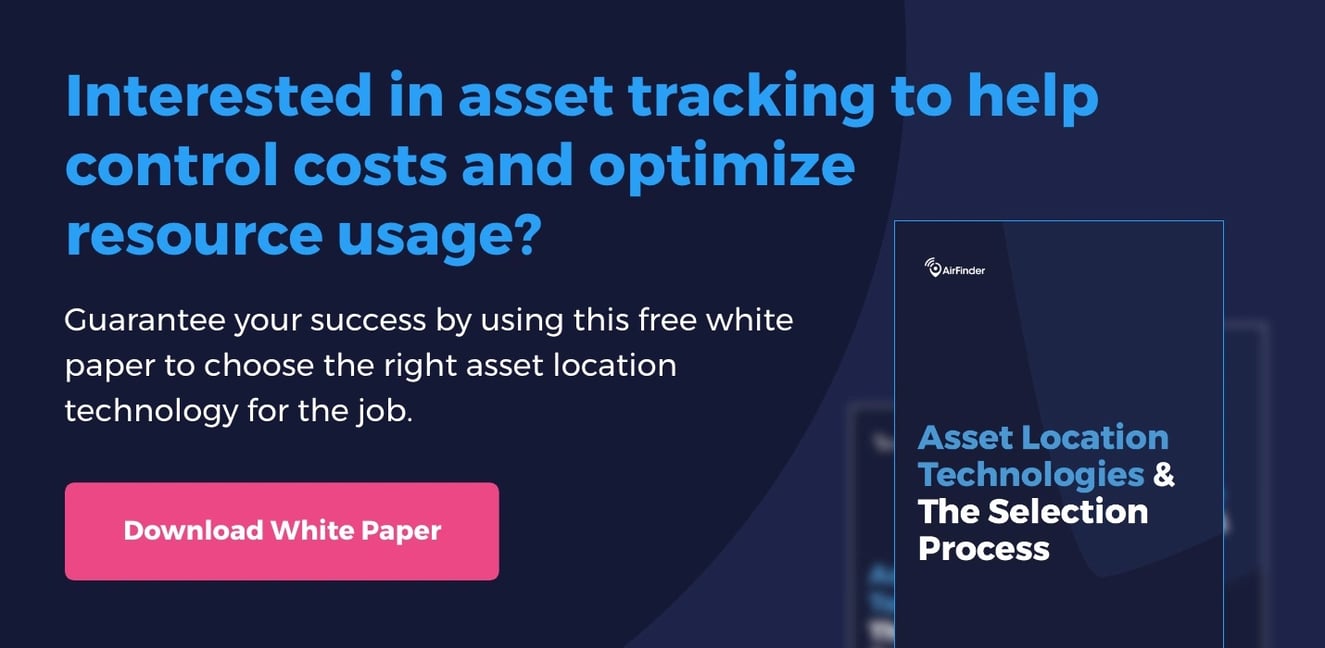WiFi real-time location system (RTLS) technology uses tags to transmit a WiFi signal to multiple access points throughout the building. Using differential-time-of-arrival methods and received signal strength (RSSI), the receivers are able to locate the tag.
While we do not believe that WiFi is always an ideal RTLS option, there are some benefits worth mentioning. For example, you can often use existing WiFi structure with firmware changes—which may save time in deployment. Also, WiFi-based systems are more accurate than, say, proximity-based RTLS systems because they use time-of-flight (TOF) measurements with a relatively wide bandwidth. Accuracy indoors is related to signal bandwidth, so if you’re doing 80 GHz of 5-GhZ WiFi, you can often get accurate location positioning within a few meters.
That said, there are some serious shortcomings of WiFi RTLS that can’t be ignored. Take a look.
The Shortcomings Of WiFi RTLS
- WiFi-based RTLS tags are the most power-hungry, the largest in size, and the second most expensive of all RTLS technology. For example, an AeroScout tag costs about $60—and we’ve seen WiFi tags as expensive as $95 a piece—so using these to track disposable or ad hoc assets isn’t financially realistic. And since they’re inefficient (the batteries only last days at a time) this makes RTLS much more difficult.
- Installation can be difficult. For example, during deployment you have to survey the building by walking around with calibration devices to determine the WiFi access points. And because WiFi-based RTLS rides on top of the IT structure, your IT team will be heavily involved with getting it up and running. Additionally, the access points to support a WiFi RTLS system are a multi-thousand-dollar expense each.
- To enable an indoor positioning system using WiFi RTLS, you need infrastructure that supports time-of-arrival (TOA) algorithms, which very few manufacturers produce.
- You may have to license location software that will feed into the location engine, which can increase the price.
- Anytime you integrate anything into your TCP/IP LAN data network, you increase its vulnerability. While RTLS solutions don’t send much data and aren’t connecting to WiFi as much as pinging it, there are still security concerns about having unmanaged WiFi end nodes on your network.
- You need more access points. You could need four to five times more than are actually required for the data load. This, of course, makes the infrastructure more complex and bumps up your cost significantly. Also, depending on the technology you’re using, you could get channel management problems—especially if the WiFi is 2.4GHz based. This affects the WiFi systems performance. WiFi is made for data transfer, but if you use more access points solely for the purpose of RTLS, the higher levels of interference could cause your data system to suffer. WiFi tends to interfere with itself when there are more than three access points in a given area.
In Summary
Even if the facility in question has WiFi infrastructure in place, the items you want to track require precise location, and the tag price of WiFi RTLS isn’t problematic, you should still be wary. Take the drawbacks listed here into consideration before you make your decision.
If you need help making sense of asset location technology, download our free white paper. In it, you'll find three general types of asset location technology and the scenarios in which they work best.





